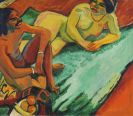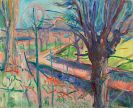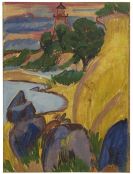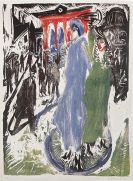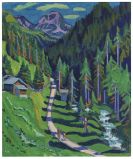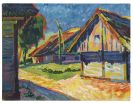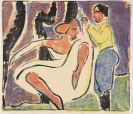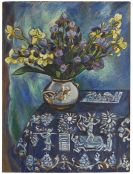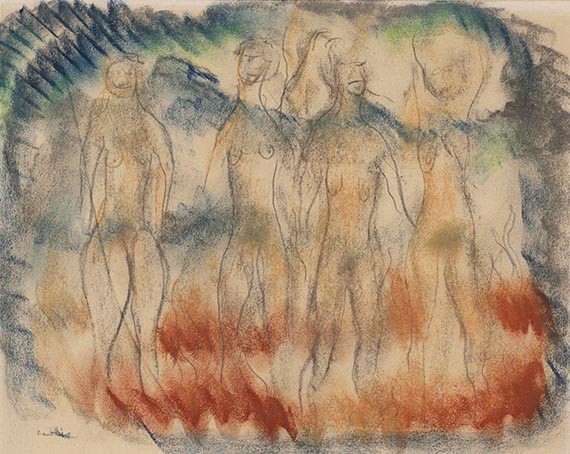
Heinrich Ehmsen
Kiel
1886 -
Berlin
1964
Heinrich Ehmsen was born on August 9, 1886, as the fifth child of a basket maker. His childhood was determined by poverty and his parents' struggle to provide food. From the age of six, the artist had to contribute to the family's livelihood by weaving baskets in his father's workshop. From 1901 to 1906 Ehmsen trained under the Kiel master painter Ernst Rüschmann and painted his first landscape and animal studies. Ehmsen's interest in fine arts grew and he decided to train as a decorative painter, paying for his training by painting houses after work.
From 1906 to 1909 Heinrich Ehmsen attended the Düsseldorf "Kunstgewerbeschule", where he was taught by leading exponents of "Jugendstil" such as Peter Behrens and Jan Thorn-Prikker. At the end of his training Ehmsen received his first order as decorative painter: the design of two rooms at a Düsseldorf exhibition on church art.
In 1909 Ehmsen spent a year in Paris, where he was inspired for his future work.
From 1911, when he was drafted into the military, until 1928 Ehmsen worked as a freelance artist in Munich, interrupted by World War I and several trips.
The "Blauer Reiter" group of artists began to influence Ehmsen's creative work and his art became more critical of society. As a human being and as an artist, Ehmsen increasingly developed into a fighter for the wretched in society and revolution became the central theme of many of his paintings.
Reflections on the war and the failed German revolution led the artist to paint his madhouse studies. Ehmsen was inspired by the insane to depict the danger and threat to human existance. In 1929 after a six months study sojourn to Southern France, Heinrich Ehmsen moved to Berlin. The following year he worked at the German academy in Rome for six months together with Schmidt-Rottluff and Georg Schrimpf and subsequently went to Southern Italy.
In 1933 Ehmsen was held captive by the Gestapo for several months. He was denounced as a "degenerate" artist in 1937 and his pictures were removed from German collections.
During World War II Ehmsen was used as a painter for the Wehrmacht and a soldier. The artist's house in Berlin, which contained many of his works, was destroyed.
After the war Heinrich Ehmsen began to work as deputy principal and head of the painting class at the "Hochschule für bildende Künste" in West Berlin, but in 1950 transfered to the "Akademie der Künste" in East Berlin.
Would you like to sell a work by Heinrich Ehmsen?
Infos for seller
